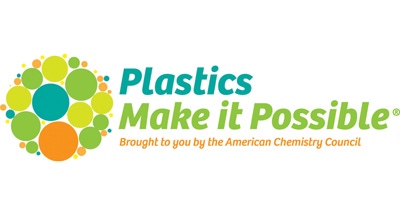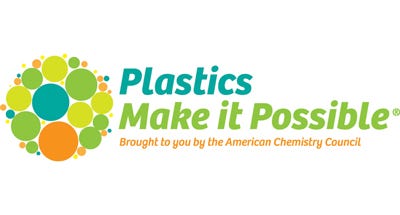February 9, 2014


Plastics Make it Possible
Americans produce 25 percent more household waste during the holiday season—that's an extra 1.2 million tons of trash per week from Thanksgiving to New Year's Day. Plastics Make it Possible offers some simple tips on how plastics and recycled plastics can help reduce waste by allowing consumers to do more with less-during the holidays and in the new year.
"The holidays often involve traditions that live on for generations, so why not make it a tradition to seek ways to create less waste?" says Steve Russell, vp of plastics for the American Chemistry Council, which sponsors the Plastics Make it Possible initiative. "That's a tradition that can be carried on throughout the year. For example, waste-saving plastic packaging and reusable containers can result in less food and packaging waste from meals and entertaining, during the holidays and year round."
Here are some examples of how consumers can do more with less this holiday season and beyond:
• Recycle More Plastics: Plastics recycling is growing rapidly, so make certain everyone in your household and your guests know what plastics are recycled-both at curbside and at in-store collection bins. Nearly all Americans today have access to plastic bottle recycling, and many communities also collect other plastic containers and even bottle caps and lids. Separately, flexible plastics, such as bags and product wraps, can be returned to many grocery and retail stores for recycling. Check with your municipality or type in your zip code at Earth911.com to find out what's collected and where in your community.
Recycling results in less plastic in the garbage bin—and these plastics can live a new life as holiday gifts, clothing, cooking tools, garden planters, building products, packaging or even carpeting for your home. Click here for tips and info on recycling more plastics.
• Look for Recycled Plastic Kitchen Tools: Recycled plastics from beverage bottles, yogurt containers, and milk jugs are used to make a variety of handy kitchen tools, such as cutting boards, mixing bowls, cooking utensils and storage containers. Seeking out products made with recycled plastics helps create another use for plastic packaging and keeps valuable materials out of landfills.
• Reduce Food Waste: Choosing the right packaging is really an investment in protecting our food-up to 10 times more resources are used to make and distribute food than to make the packaging that protects it. Reusable, airtight and shatter-resistant plastic containers help keep holiday leftovers fresh in the refrigerator after those big meals, which helps reduce food waste. And freezing leftovers in various sized plastic containers lets you enjoy your favorite holiday dishes throughout the winter in pre-portioned servings. Plastic containers labeled for use in both the freezer and microwave means you can freeze, heat and even serve food from the same container, which saves time and energy. And if you end up with more food than you need after your holiday meals, lightweight plastic zipper bags are great for sending leftovers home with guests so food doesn't go to waste. These bags can be washed and reused and eventually recycled (if clean and dry) with plastic bags and wraps at participating stores.
• Look for Innovative Packaging: Seek out meals, entrees, side dishes, snacks and ingredients packaged in lightweight, re-sealable plastic pouches that allow you to use only the amount you need and then store the rest for later, which leads to less food waste. And that lightweight plastic packaging also saves on fuel needed to transport food and drinks to grocery stores, which results in less energy use and fewer truck engine emissions. A recent study found that using alternatives to six widely used types of plastic packaging would require 80 percent more energy demand-on an annual basis, that's equivalent to the energy from more than 3,800 oil supertankers.
Source: Plastics Make it Possible
.
About the Author(s)
You May Also Like


